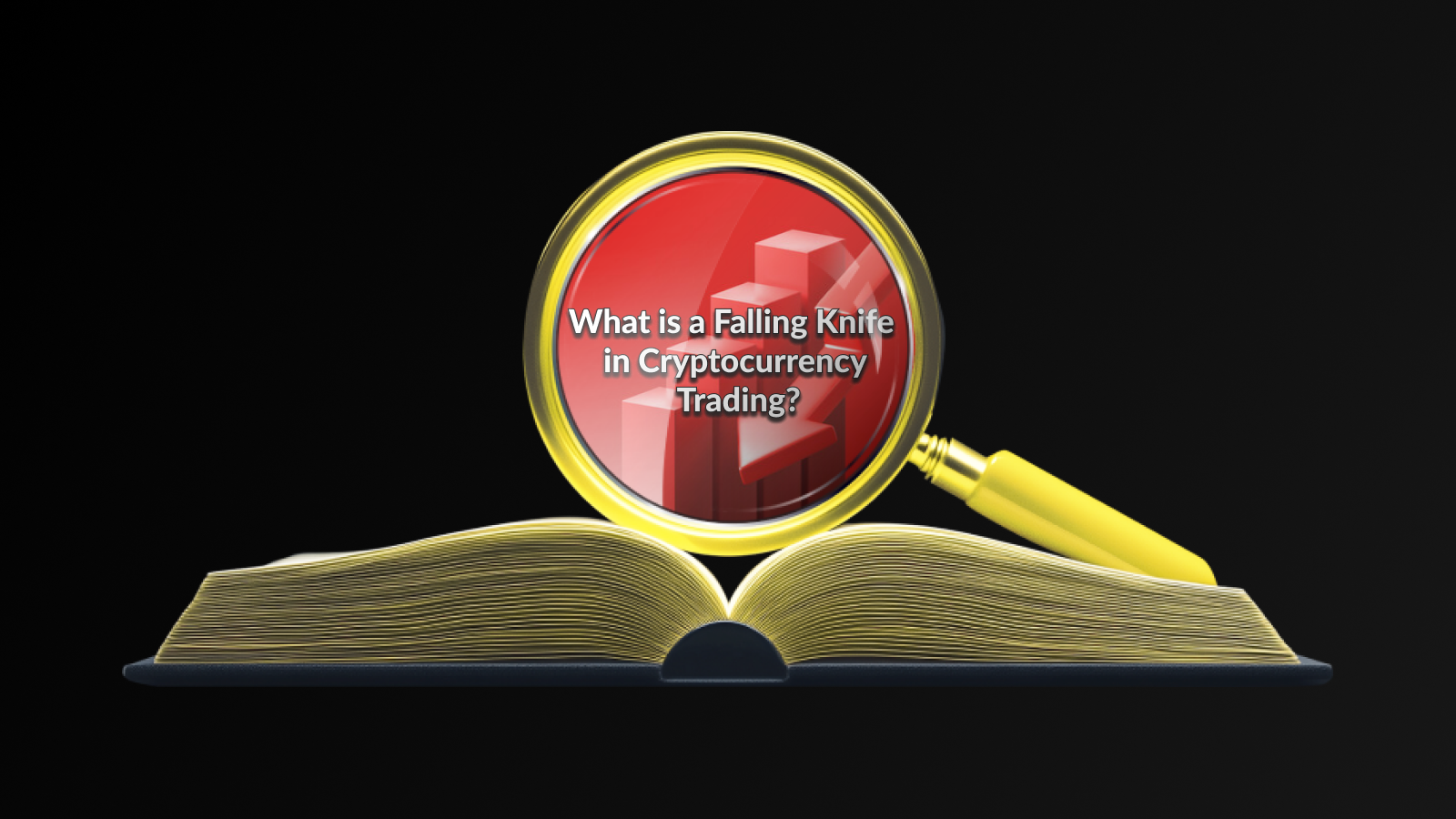Introduction
The term falling knife trading refers to the practice of buying assets that are rapidly declining in value, with the hope that the price will eventually stabilize and rise. This strategy can be particularly enticing in the volatile world of cryptocurrency, where traders are often on the lookout for opportunities to capitalize on significant price drops. However, it is essential to recognize that attempting to catch a falling knife comes with inherent risks.
When engaging in cryptocurrency risk management, traders must consider the potential for continued declines in asset prices. Prices can fall for various reasons, including changes in market sentiment, regulatory actions, or broader economic factors. As a result, even seasoned traders may find themselves caught off guard if they underestimate the momentum of a downtrend.
Implementing sound risk management strategies is crucial when adopting a falling knife approach. Traders should always evaluate potential losses and establish clear exit points to limit their exposure. By maintaining discipline and staying informed about market trends, traders can navigate the complexities associated with falling knife trading.
In the fast-paced environment of cryptocurrency trading, understanding the risks and employing effective strategies can make a significant difference. Staying aware of market signals and trends can help traders determine whether a price decline is a temporary dip or a sign of more significant issues within the asset’s fundamentals.
Risks of Catching a Falling Knife
The concept of falling knife trading in cryptocurrency can be incredibly enticing, especially when prices plummet and potential gains are at the forefront of a trader’s mind. However, chasing after these drops carries significant cryptocurrency risk management challenges that can lead to devastating losses.
One of the primary risks involved is the potential for further decline after an initial drop. When trying to catch a falling knife, traders may misjudge the market sentiment or underlying issues impacting the asset, leading to a false sense of security. This often results in buying positions that quickly diminish in value, further compounding financial losses.
Additionally, market volatility in cryptocurrencies can be extreme and unpredictable. A rapid price decline may be followed by sharp recoveries or continued downward spirals, making it complicated for traders to establish an effective entry point. This unpredictability increases the importance of proper cryptocurrency risk management, as emotional decision-making can result in impulsive trades.
Moreover, the financial implications of catching a falling knife extend beyond mere losses. It may tie up capital in poorly performing assets, limiting a trader’s ability to engage in more lucrative opportunities or diversify their portfolios effectively. Learning to recognize when to cut losses is essential for risk mitigation.
While falling knife trading might present an alluring opportunity, the risks associated far outweigh the prospects. Understanding these challenges and implementing solid cryptocurrency risk management strategies are crucial for any trader looking to navigate the stormy seas of the crypto market.
Strategies to Avoid Falling Knife Traps
One of the most effective cryptocurrency risk management strategies involves setting clear guidelines before entering a trade. This includes defining your tolerance for loss and setting stop-loss orders to minimize potential damage in case the market continues to decline. By pre-defining your exit points, you can avoid making impulsive decisions that often lead to chasing falling knives.
Another crucial strategy is to focus on market trends and overall sentiment rather than just price action. Technical indicators can provide useful insights into whether an asset is experiencing a temporary setback or a prolonged downtrend. Utilizing tools such as moving averages or the Relative Strength Index (RSI) can enhance your decision-making process when assessing potential falling knives.
Additionally, practicing diversification within your portfolio can serve as a safeguard against losses associated with falling knives. By spreading your investments across various cryptocurrencies, you reduce the impact that a single asset’s sharp decline can have on your overall financial standing.
It’s essential to avoid FOMO (Fear of Missing Out) trading behavior. Many traders feel compelled to buy during a downturn, hoping the price will rebound. Resist this urge by sticking to your pre-determined strategies and maintaining a disciplined approach to trading. This mindset can significantly aid in avoiding falling knife traps, allowing you to trade more effectively and confidently.
Examples of Falling Knives in the Crypto Market
In the volatile world of cryptocurrency trading, instances of falling knives are not uncommon. A notable example occurred with Bitcoin during late 2017, when rapid price corrections followed the coin’s meteoric rise. Many traders, eager to capitalize on the dip, rushed in only to see prices plummet further, highlighting the danger associated with cryptocurrency risk management in such situations.
Another significant case can be observed with Ethereum in mid-2018. After reaching an all-time high, the asset faced a substantial downturn. Traders attempting to catch the falling knife were often met with further declines in value, showcasing how a falling knife trading strategy can lead to considerable losses if not approached cautiously.
Moreover, the collapse of Terra’s LUNA and UST in 2022 serves as a stark reminder of the risks. The abrupt drop in prices led many to mistakenly believe they were getting in at a bargain, only to witness an unprecedented downward spiral. This incident emphasizes the need for sound cryptocurrency risk management strategies to prevent falling into the trap of falling knives.
Looking at Dogecoin during various market corrections illustrates how even well-known cryptocurrencies can experience falling knife scenarios. Traders must remain vigilant and well-informed, as market trends can quickly shift, leading to potentially severe financial repercussions.
Frequently Asked Questions
What does ‘falling knife’ mean in cryptocurrency trading?
A ‘falling knife’ refers to a situation where the price of a cryptocurrency is rapidly decreasing, making it challenging for traders to determine when to buy in. Attempting to catch a falling knife can result in significant losses.
Why is it dangerous to try to catch a falling knife?
Trying to catch a falling knife can be dangerous because the price can continue to plummet, leading to further financial loss. Without proper analysis, traders may misjudge the market and enter too early.
How can traders avoid getting hurt by falling knives?
Traders can avoid getting hurt by conducting thorough market analysis, setting predefined stop-loss orders, and waiting for confirmed signs of recovery before buying into a declining asset.
What indicators can suggest that a falling knife is stabilizing?
Indicators that might suggest stabilization include the formation of support levels, bullish candle patterns, or positive news regarding the cryptocurrency that may boost confidence.
Is buying a falling knife ever a good strategy?
Buying a falling knife can sometimes be a strategy for experienced traders who are confident in their analysis and risk tolerance, but it generally carries high risk and should be approached with caution.
What psychological factors contribute to the urge to catch a falling knife?
Psychological factors include fear of missing out (FOMO), the desire to recover losses quickly, and the belief that assets are undervalued at their current price.
Are there specific cryptocurrencies more prone to falling knives?
Smaller, less established cryptocurrencies tend to be more prone to falling knives due to their volatility and lower liquidity compared to more established cryptocurrencies like Bitcoin and Ethereum.
Disclaimer
This article is for informational purposes only and does not constitute financial, investment, or legal advice. Cryptocurrency investments are highly volatile and involve significant risk. Always conduct your own research or consult with a financial advisor before making investment decisions. Darkex is not responsible for any losses incurred based on the information provided.





